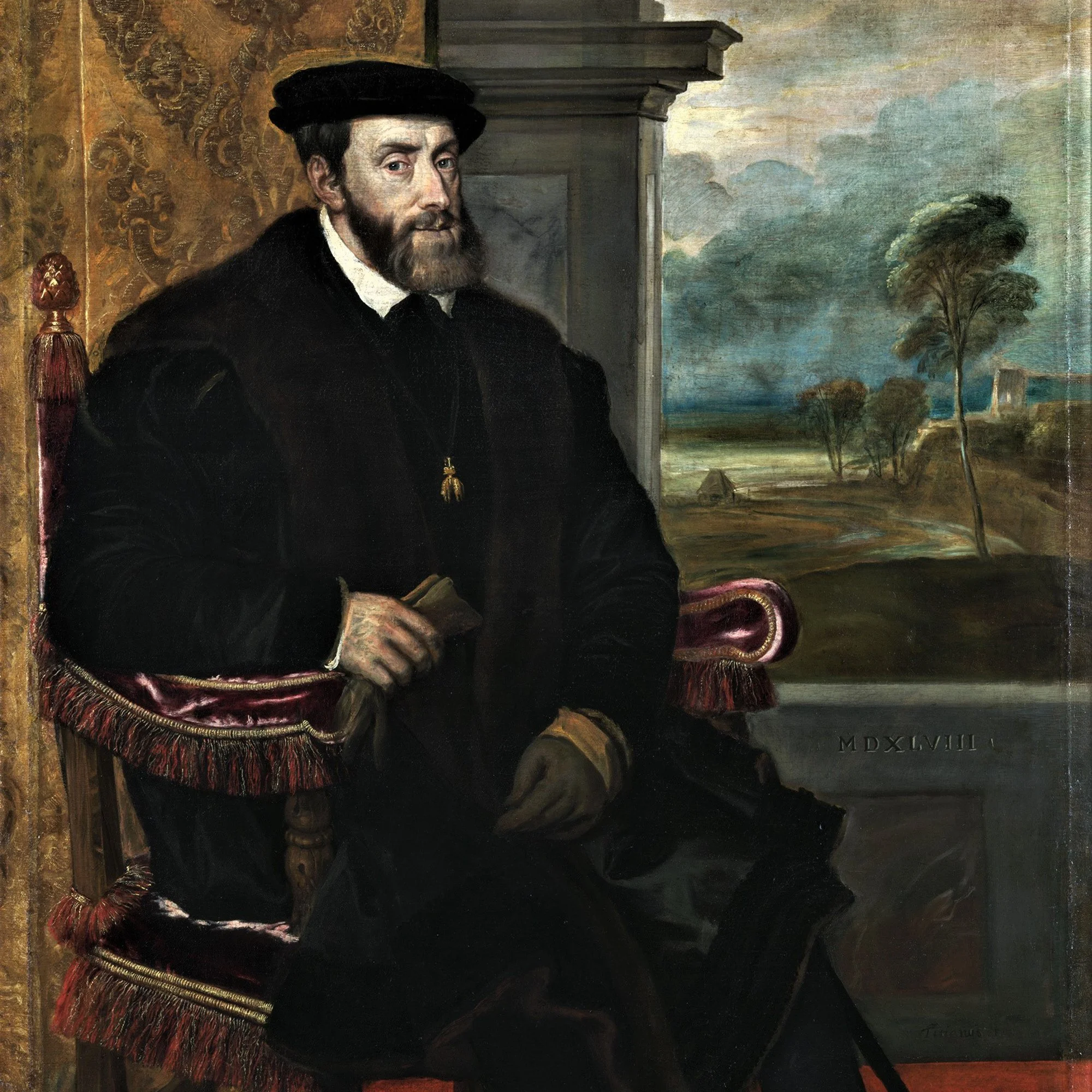Charles V, Holy Roman Emperor and King of Spain, 1548
At the dawn of the 16th century, Europe was a simmering pot of ambition, rebellion, faith, and war. Into this volatile world stepped Charles V—heir to the most sprawling empire Europe had seen since the Romans. With a crown on nearly every horizon, Charles didn’t just rule kingdoms; he inherited a continent’s worth of conflict.
A Man of Many Crowns
Born in 1500 in Ghent, Charles was a Habsburg by blood, and destiny dealt him a royal flush. By age 19, he was King of Spain (including its vast American colonies), Archduke of Austria, and eventually Holy Roman Emperor—a title that, at least in theory, gave him authority over much of Central Europe. His possessions stretched from Peru to the Philippines, from the Netherlands to Naples.
But with all this power came monumental challenges.
His Challenges: A Europe in Turmoil
Charles was pulled in every direction:
The Protestant Reformation was exploding across Germany. Sparked by the monk Martin Luther, this religious revolt split Europe between traditional Catholics and the new Protestants. Many local rulers in the Holy Roman Empire (the loose collection of territories Charles was meant to oversee) sided with Luther, not just for faith, but also to gain more independence. These rebellious leaders became known as the Protestant princes.
France was a constant rival. King Francis I of France spent his life trying to block Charles’s rise, leading to a string of wars and power struggles.
The Ottoman Empire, under Sultan Suleiman the Magnificent, was advancing steadily into Christian Europe, posing a real threat to Charles’s eastern borders.
Meanwhile, back in Spain and the Netherlands, revolts and resentment brewed against Charles’s centralizing rule. People often saw him as a distant ruler more focused on empire than on their daily struggles.
He wanted a united Christian world—but found himself watching it splinter. He dreamed of peace—but spent most of his reign at war. He believed in order—but ruled over chaos.
His Views: Duty, Devotion, and Dynasty
Charles was a deeply religious man who believed it was his God-given duty to defend the Catholic faith and keep Europe united under one Christian emperor. He also saw himself as a guardian of the Habsburg dynasty, whose wealth and power had been built through centuries of strategic marriages and alliances.
He held to an older, almost medieval vision of empire: one Christian ruler, one faith, one harmonious order. But Europe was changing fast. The printing press, Protestant ideas, and rising national ambitions were creating a new kind of world that Charles couldn’t control.
His Solutions: Talks, Wars, and Letting Go
To face the growing tensions in his empire, Charles used two tools: negotiation and force.
He frequently called large political gatherings known as “diets”—meetings where all the rulers of the Holy Roman Empire would come together. At these diets (like the famous Diet of Worms in 1521), Charles tried to persuade the princes and church leaders to stay united and loyal, especially on religious matters.
But when talks failed, he went to war—especially against the Protestant princes, who had broken with the Catholic Church and challenged his authority.
Sometimes he won, like at the Battle of Mühlberg in 1547, but victories didn’t last. The deeper problems—religious division, local resistance, and the sheer size of his empire—were too much for one man to solve.
By the 1550s, sick and weary, Charles realized he couldn’t hold it all together.
In 1556, he made a remarkable decision: he gave up the throne. He split his empire in two:
To his son Philip II, he gave Spain, its colonies, and the Netherlands.
To his brother Ferdinand, he gave the Austrian lands and the imperial title.
Charles then retired to a monastery in Spain, where he died two years later.
Legacy: A Man Before His Time—or Behind It?
Charles V remains one of the most fascinating figures in European history: an emperor with unmatched power who spent his life chasing peace and unity—but mostly found division and unrest. He tried to hold the old world together just as the new world was being born.
He was too Catholic for the age of religious freedom, too imperial for the rise of national states, and too committed to control for a Europe that was slipping into modernity.
But in his failures, we see the shape of the Europe that came after him: divided, plural, and constantly negotiating between power and principle. Charles didn’t conquer the world—but he showed us how hard it is to try.

